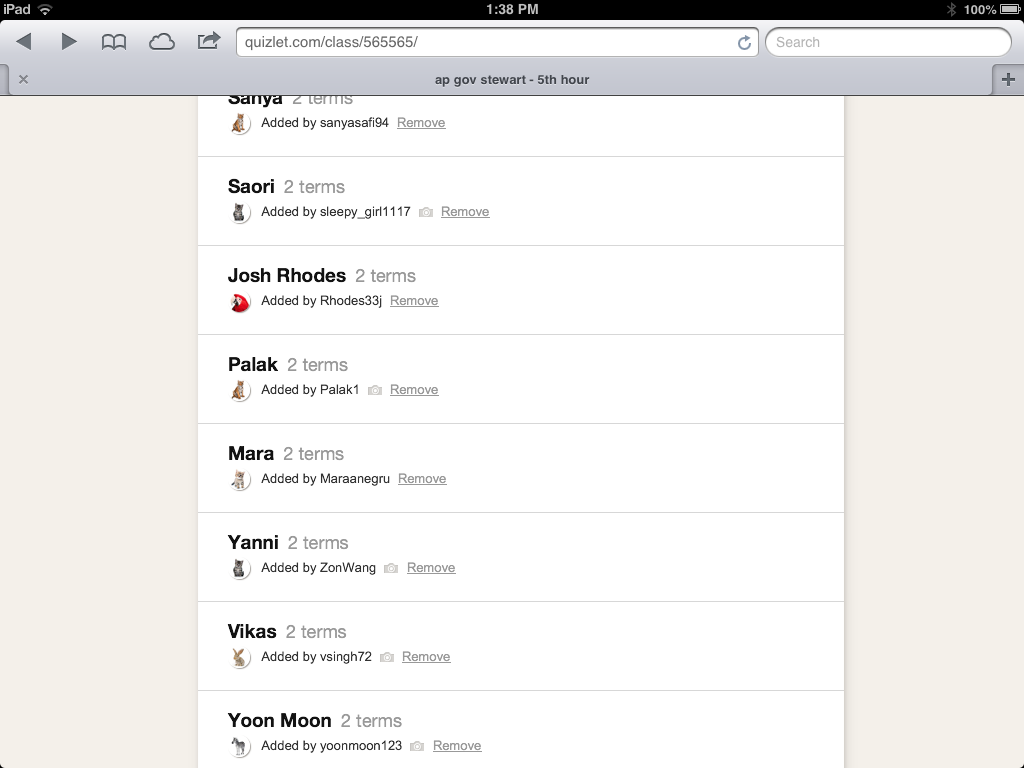When you find out that you will teaching in a 1:1 environment, it may be difficult to figure out where to start. There are so many different apps, strategies, and ideas. To not get overwhelmed, I followed the KISS acronym -- Keep It Simple Stewart!
I have a lot of ideas, but on many of them, I realized I did not have the time to learn how to implement them. I tried not to get caught up in the excitement of the device. Instead, I focused on a simple philosophy. Sometimes I can't accurately express the way to wield the power of the iPad, but at one presentation this year, I listened to my colleague in the Physics Department ask a simple question -- "What can the iPad do for learning that I couldn't do previously?"
That question resonates with me as I think about a simple philosophy that any teacher can follow when they enter a 1:1 teaching enviroment.
One strategy that I always tried to incorporate in my classes before the 1:1 enviroment was exit slips or anything to measure if the student grasped the concepts that they learned during the class. Grading 150 exit slips per day is definitely a daunting task. There's got to be a better way.
With any 1:1 device, there is a better way.
For workflow, my classroom leverages
Schoology. As stated in a
previous post, my school district has an enterprise version the Schoology so that allows for what I'm finding to be an infinte amount of space. Schoology has a Test/Quiz function.
To adhere to the KISS philosophy, I didn't want to overwhelm my students (or myself!) with more apps to search for. Since we were already leveraging Schoology, using the Test/Quiz function would make it easier for the students to locate where we needed to go. Schoology became the central hub for the class.
I committed to the idea that at the end of the each hour, the students would take a formative assessment on what we learned that day. The typical assessment was 3 mutliple choice questions.
The set up is relatively easy. Questions can be mutliple choice, true false, fill in the blank, you can input picutres for students to examine, or just about anything. I like the functionality because it gives the teacher options such as creating start and end times, a time limit, or an attempt limit.
The teacher gets immediate feedback.
With the feedback, the teacher can determine what type of reteaching or remediation should occur the next day.
Since I committed to this at the end of every class period, the students knew that at 10:45, the exit slip would open, and that is what we were doing at that time. Some students got competitive -- "3 out of 3 in one attempt, Mr. Stewart!" they would shout. Adding positive encouragment was always helpful as I would always recognize the first few students to get 3 out 3 correct.
Schoology provides a easy platform in the app. My students were already using Schoology. There are other options to quiz and collect data with the students. For instance, my school district uses Mastery Manager. I could use their online testing platform and then utilize the wonderful gradebook paste option to record their scores in my gradebook. But this would be sending the students somewhere else on their iPad, breaking away from my KISS philosophy.
The use of exit slips as a formative assessment is a simple idea. It's one that any teacher can commit to. When deciding on how you can use your 1:1 device, consider the end in mind -- what should the students be able to do or know at the end the class? Create a quick quiz, have the students complete it, and make conclusions on the effectiveness of your lesson.
The power of the 1:1 device makes the exit slip strategy more effecient with grading and data collection.























